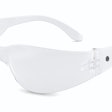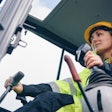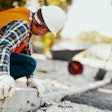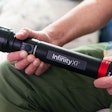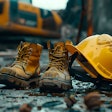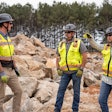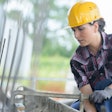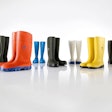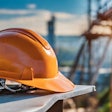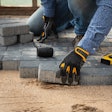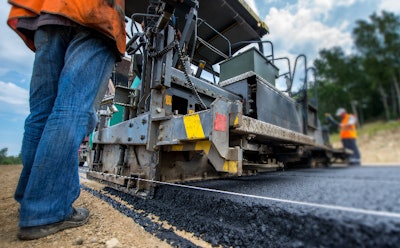
With about 60 million tons of hot-mix asphalt (HMA) pavement laid on U.S. roads each year, there is plenty of work to be done in this construction sector. Also called bitumen, asphalt is a sticky, black, highly viscous liquid or semi-solid form of petroleum that is sometimes mixed with other substances such as crushed rock or recycled rubber.
According to an article in the National Library of Medicine, ‘Built Environment: New Default for Asphalt?’, the commonly-used HMA is energy-intensive to produce, releases greenhouse gases, and poses potential hazards for workers.
Warm-mix asphalt (WMA) can be used at temperatures of 212–284°F, about 50–100°F cooler than HMA, while cold-mix asphalt (CMA) is used at ambient temperatures. Both can be produced with minimal modifications to HMA plants, according to University of Wisconsin–Madison civil and environmental engineering professor Hussain Bahia.
Researchers are looking at lower-temperature asphalt pavements as a way to mitigate these challenges.
Even so, it’s important for construction workers to dress in such a way that provides optimal protection, comfort, and performance as asphalt is associated with a significant fire hazard. When it comes into contact with skin, it can lead to serious burns, rashes and other skin conditions.
Addressing Work Hazards
Using the Material Safety Data Sheet helps inform workers of those materials with which asphalt is mixed such as solvents to help formulate a deeper understanding of the risks involved in working with it.
Part of the personal protective equipment (PPE) used when working around asphalt includes pants designed to offer protection while working in that environment. There are several factors to consider when choosing the most appropriate pants.
Heat- or flame-resistant pants help protect those working around the high temperatures of asphalt. The National Fire Protection Association (NFPA) 2112 Standard provides minimum requirements for the design, construction, evaluation, and certification of flame-resistant garments. The NFPA provides ratings, as does the American Society for Testing and Materials (ASTM).
Look for safety features such as Arc Flash ratings. The Arc Thermal Protective Value (ATPV) refers to the maximum incident energy in calories per centimeter squared that protective equipment can be exposed to and prevent the onset of a second-degree burn, with ratings based on the fabric’s total weight.
Flame resistant garments that are certified by Underwriters Laboratories meet the requirements of NFPA 2112 Standard on Flame Resistant Garments for Personnel Against Flash Fire, 2007 Edition. High-visibility is another factor to consider in choosing pants. High-visibility pants help the construction worker stand out in high traffic and low-light conditions when applying asphalt on a road. ANSI Class E apparel is a supplemental classification of an apparel type designed to increase the visibility of the wearer. EN ISO 20471 Class 2 offers an intermediate level of visibility.
Coveralls can be a preferred piece of apparel, as they cover all of the body and minimize the amount of exposed skin.
Materials and Functional Features
Fabric offering breathability is another option when working around hot asphalt. Other desired factors include fabric with moisture management for comfort. Fabrics such as those offering water-resistant features should protect moist liquids from permeating the pants and reaching the skin.
Some work apparel manufacturers offer pants made from denim or canvas to help with abrasion resistance. The Texas Department of Insurance Division of Workers’ Compensation notes those working around asphalt should wear pants without cuffs that extend over the tops of the boots.
The functional design of cargo pants offers multiple pockets providing plenty of storage space for tools, small equipment, or personal items needed when working on asphalt. Look for pants with reinforced knees or openings for knee pads that would provide extra knee protection when having to kneel or crouch on the job.
A relaxed fit in the seat and thighs provide freedom of movement. Reinforced crotches also are often found in pants designed for asphalt work. For those who prefer not to wear a tool belt, tool holders with hook and loop fasteners on pants help attach tools that are needed on jobsites.
With pockets, look for closures such as snap closures that help ensure items will not fall out of the pants and into the hot asphalt. Non-conductive plastic buttons are designed for electrical safety and to prevent scratching equipment.
Learn about the latest workwear trends and products on IRONPROS!




